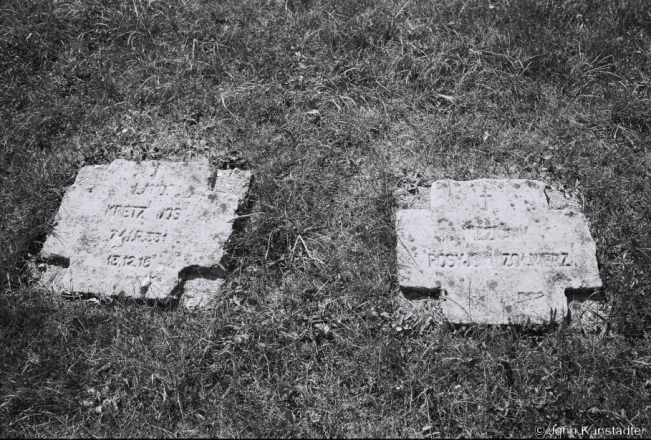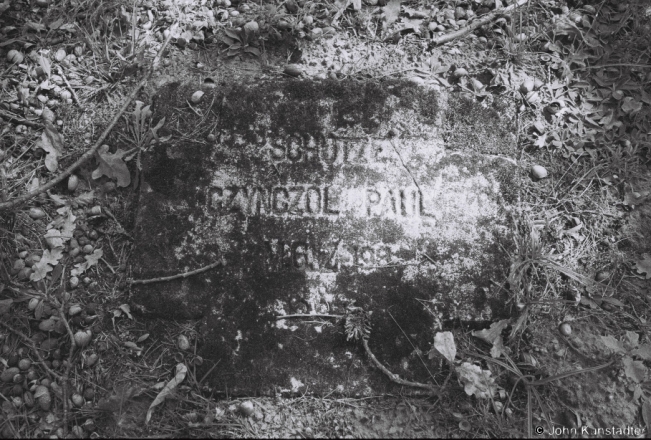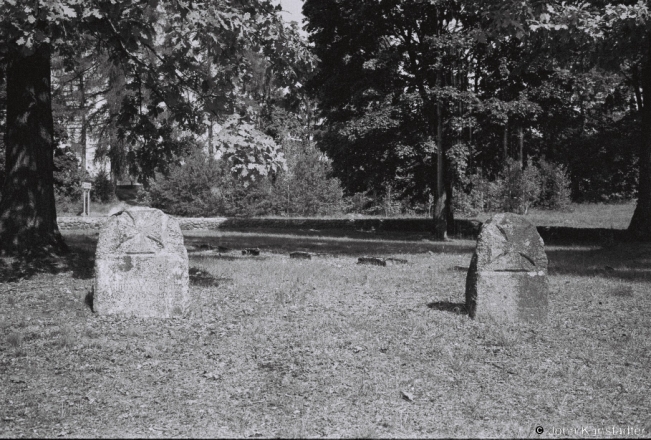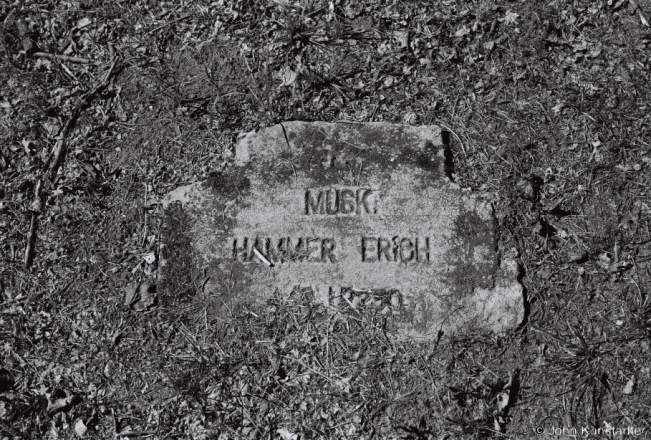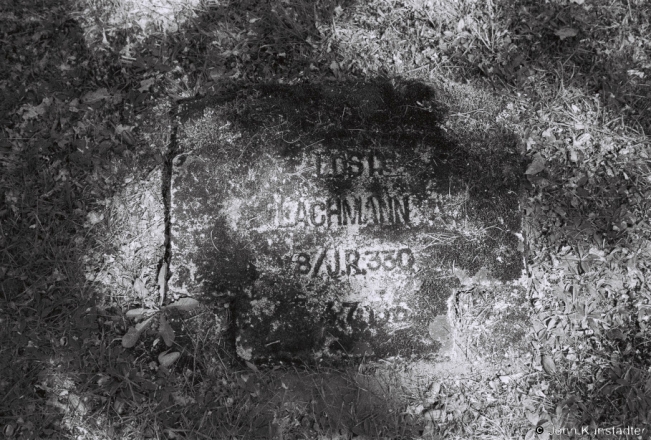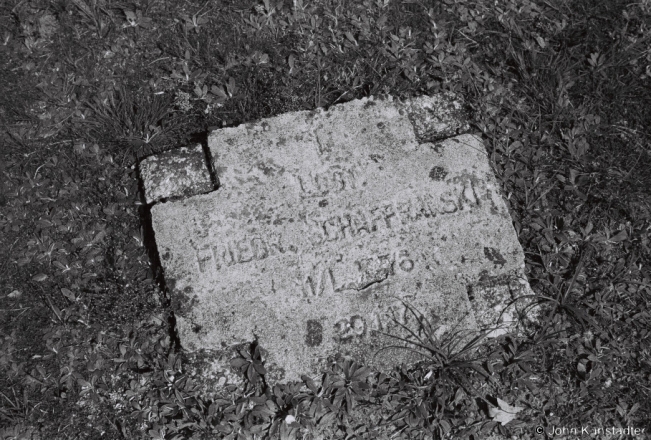Photo expedition to Valozhyn District 2019: Padbjarez’, Dzjasjatniki (Dzjesjatniki), Al’shanka, Vishnjeva, Kiby, Adamova, Zhomajdz’, Ts’viroushchyna, Filipinjaty.
Фотавандроўка па Валожынскім раёне 2019 г.: Падбярэзь, Дзясятнікі (Дзесятнікі), Альшанка, Вішнева, Кібы, Адамова, Жомайдзь, Цьвіроўшчына, Філіпіняты.
World War I cemeteries (part XXX): German cemetery in Dzjasjatniki (Dzjesjatniki) II/III. See also photos of the day for December 1, 2015.
After World War I the German War Graves Commission (Volksbund Deutsche Kriegsgräberfürsorge — “Volksbund”) paid the government of the Second Polish Republic to look after German war cemeteries on Polish territory. Between 1921 and the Nazi-Soviet invasion of September 1939 Polish territory included the western Belarusian lands. The Poles undertook careful exhumations and where necessary reburied soldiers’ remains under new concrete crosses or tombstones. In many cases, as here in Dzjasjatniki (see the first photo), cemeteries contained remains of soldiers from the Russian imperial army; the Poles treated those remains with equal respect. Thus one sees gravestones of soldiers of the Russian imperial army, with inscriptions in Polish, paid for by the German Volksbund.
A selection of gravestones. Among the German units represented by soldiers buried here were the 76th, 198th, 230th, 329th, 330th, 331st, 345th and 435th regiments. According to the Volksbund site (https://kriegsgraeberstaetten.volksbund.de/liste/desjatniki) the cemetery contains the remains of about 3,500 soldiers.
Могілкі Першай сусьветнай вайны (частка XXX): нямецкыя могілкі ў в. Дзясятнікі (Дзесятнікі) II/III. Гл. таксама фотаздымкі дня 01.12.2015 г.
